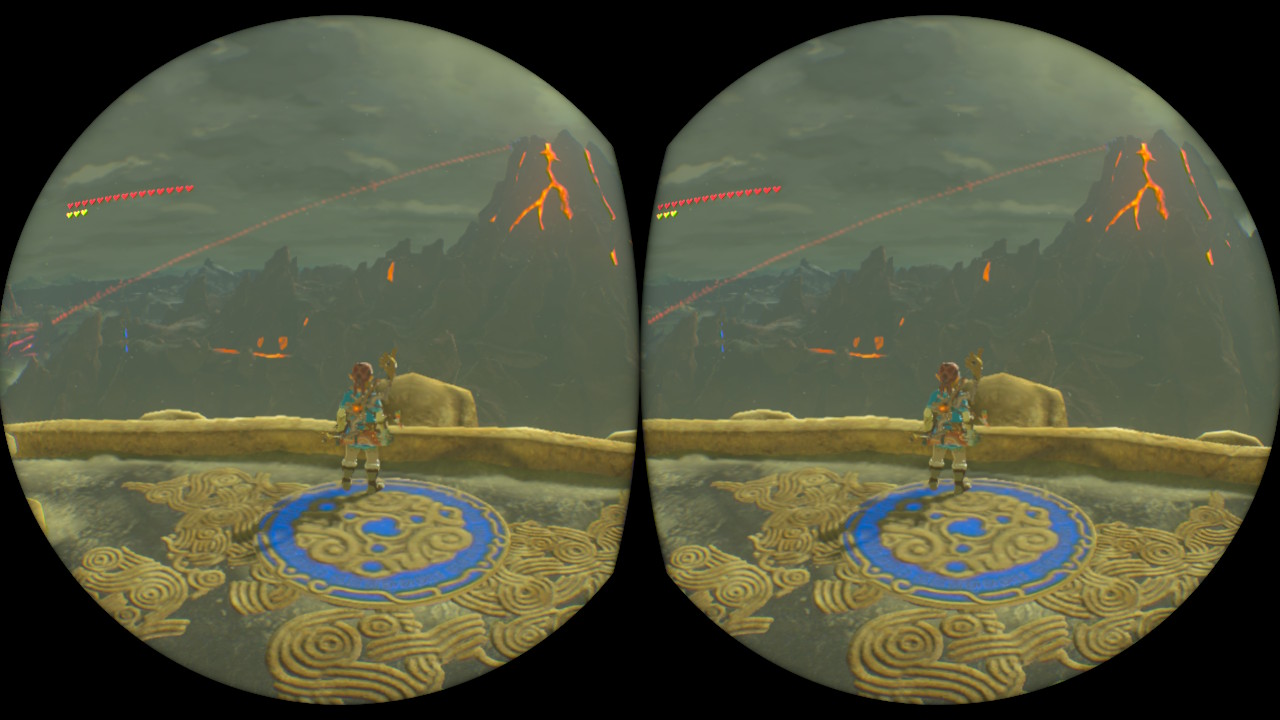Zelda in VR was the most nauseous experience of my life
Seriously, don’t do it

A new update hit the Nintendo Switch this week, bringing in a number of tweaks to the console’s software. The main one being VR support for two of the Switch’s biggest titles – Super Mario Odyssey and Legend of Zelda: Breath of the Wild.
And it may be the single worst experience you can have on the Nintendo Switch.
I was surprised, as I’d been testing out the VR goggles from the Nintendo Labo VR Kit, and was generally impressed by what Nintendo had done with their crafting-based take on a VR headset.
The Switch doesn’t have a very high resolution for a VR-ready console (given that its 1,280 x 720 pixels are split in half for each eye) and the Labo VR Kit largely worked around this by sticking to simple, low-res shapes and textures, and generally keeping your first-person view locked into place, to prevent excessive motion sickness.
However, as I loaded up BOTW from my last save, it was clear the same care had not been carried over. I materialised at one of the game’s many Sheikah towers, jumping off in the paraglider to survey the game’s breathtaking mountain ranges. But while BOTW does a great job with its 1280 x 720 resolution, it wasn’t designed for anything less, and the fuzzy VR mode is painful to watch after hours spent in the game’s beautiful scenery.

BOTW is a very vertical game, and generally requires you to jump, climb and glide constantly to navigate its broad terrain. Even when on level ground, Link is having to dart between enemies, backflip to avoid attacks, and jump around all sorts of obstacles with a quickly moving camera.
Doing any of that in low-res VR is really asking for trouble, and I only managed about six minutes of play (fighting off two Moblins and finding a Korok seed) before having to lie down from the nausea.
Sign up for breaking news, reviews, opinion, top tech deals, and more.
The VR mode also doesn't take the new view into account for Link's HUD, meaning you can barely see your number of hearts in the corner of the screen. Only about half the text is visible on loading screens too.
There’s a huge disjunct with the Labo VR Kit’s VR games, which only last a few minutes and frequently remind you to take breaks out of concern for your health.
BOTW is not a game to be played minutes at a time, and the flow of the game is absolutely crippled by its half-baked VR mode, which feels incredibly short-sighted given how obvious the problems should have been in play-testing. The whole thing feels like a poorly-guised gamble for headlines.

Falling off the bandwagon
A lot of big-name video game franchises have jumped on the VR bandwagon recently: we got afallout last year, while Bethesda has led the charge with full VR ports of both Doom and Fallout 4. Valve is also planning a big-name franchise VR game for its new Index VR headset.
But a VR port worth a consumer’s time or money is hard work, and requires more than flipping a switch into split-screen mode, with no thought for the actual play experience. While the early nature of VR should be considered, one of the world’s biggest video game publishers should really have known better than to let this get past R&D.
We're hoping we don't see the same misstep with Breath of the Wild 2, unless that new Nintendo Switch console we keep hearing about manages to really up the resolution per eye. Either way, we'll be wary of big VR tie-ins from Nintendo in the future.
- The best Nintendo Switch games (that won't make you feel ill)

Henry is a freelance technology journalist, and former News & Features Editor for TechRadar, where he specialized in home entertainment gadgets such as TVs, projectors, soundbars, and smart speakers. Other bylines include Edge, T3, iMore, GamesRadar, NBC News, Healthline, and The Times.